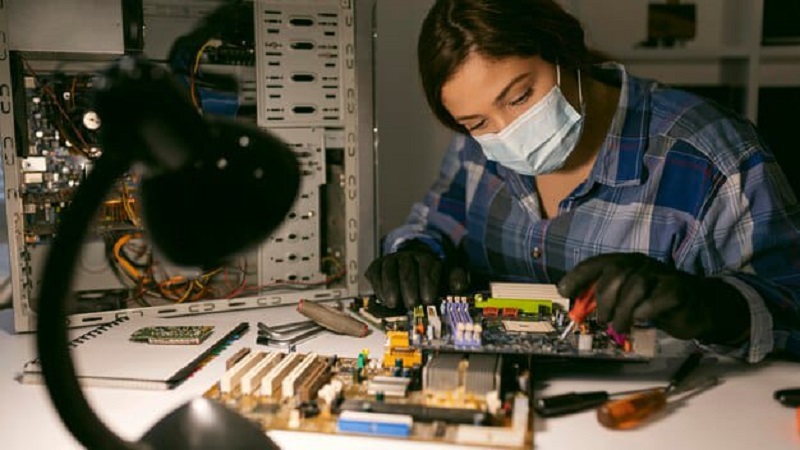Hynix Electronics, a major player in the global semiconductor industry, continues to make waves in the financial markets. One of the key discussions around the company revolves around its presence on the Korea Exchange and its connection to the term “78Bhosokawa.” This article provides an in-depth exploration of Hynix Electronics, its market performance, and the implications of “78Bhosokawa” on its financial standing.
Hynix Electronics: An Overview
Hynix Electronics, officially known as SK Hynix Inc., is a South Korean semiconductor manufacturer specializing in DRAM and NAND flash memory chips. Established in 1983, the company has grown to become one of the leading suppliers of memory solutions worldwide. It competes with industry giants such as Samsung and Micron Technology. The company’s innovations have played a crucial role in advancing computing, mobile devices, and artificial intelligence.
The Role of the Korea Exchange
The Korea Exchange (KRX) is the principal stock exchange in South Korea, where SK Hynix is publicly traded. The exchange plays a crucial role in determining the company’s stock value based on investor sentiment, market trends, and financial performance. As of recent years, SK Hynix has seen remarkable growth, driven by increasing demand for semiconductor products.
The listing of SK Hynix on the Korea Exchange provides investors with an opportunity to capitalize on the company’s growth potential. The stock price fluctuates based on global semiconductor demand, trade policies, and macroeconomic factors.
Decoding “78Bhosokawa”
One of the emerging topics related to Hynix Electronics is “78Bhosokawa.” Although the term itself does not have a direct financial definition, it may be associated with trading trends, a financial index, or an internal reference within the stock market. Investors and analysts are keen on understanding its relevance and its potential implications for Hynix Electronics’ market value.
Several theories exist regarding the “78Bhosokawa” term:
- Market Indicator – It may represent a specific market trend or index linked to SK Hynix’s stock performance.
- Financial Analysis Code – Some traders believe it could be a reference used by analysts to track semiconductor trends.
- Investment Strategy – Institutional investors may use such codes to reference trading strategies related to Hynix Electronics.
Understanding the precise impact of “78Bhosokawa” on Hynix Electronics requires deeper financial analysis and market observation.
SK Hynix’s Financial Performance
Over the past decade, SK Hynix has shown substantial growth in revenue, profitability, and market share. The company’s financial statements indicate steady revenue generation, primarily fueled by the growing demand for memory chips in cloud computing, artificial intelligence, and mobile technology.
- Revenue Growth: SK Hynix has consistently reported strong revenue growth, with a compound annual growth rate (CAGR) exceeding 10% over the last five years.
- Profit Margins: The company’s gross profit Hynix Electronics Korea Exchange 78Bhosokawa margin has remained stable, despite fluctuations in semiconductor prices.
- Stock Performance: Investors tracking Hynix Electronics on the Korea Exchange have witnessed significant stock price movements, influenced by supply chain challenges and global demand shifts.
The interplay between SK Hynix’s financial performance and stock market trends emphasizes the importance of analyzing factors like “78Bhosokawa” to understand future market behavior.
Competitive Landscape
Hynix Electronics operates in a highly competitive semiconductor industry, facing competition from:
- Samsung Electronics: The market leader in DRAM and NAND memory chips.
- Micron Technology: A key competitor in the U.S. semiconductor market.
- Western Digital & Intel: Companies focusing on storage solutions that rival SK Hynix’s product offerings.
Despite the intense competition, SK Hynix maintains a competitive edge through continuous innovation, strategic partnerships, and investments in research and development.
Future Outlook for SK Hynix
The future of SK Hynix depends on several factors, including:
- AI, 5G, and computing advancements drive increasing memory chip demand.
- Investment in Advanced Technologies: SK Hynix continues to invest in next-generation memory solutions such as DDR5 and 3D NAND.
- Trade policies, geopolitics, Hynix Electronics Korea Exchange 78Bhosokawa, and supply disruptions may affect performance.
Conclusion
Hynix Electronics remains a dominant force in the semiconductor industry, with a strong presence on the Korea Exchange. The term “78Bhosokawa” intrigues investors, emphasizing the need for clarity. SK Hynix stays competitive through innovation, investments, and market focus, guiding informed investor decisions. Read More famelife.
